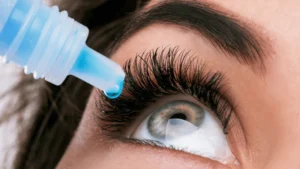Know Everything about Lupus and Dry Eyes
Introduction: Lupus is a chronic autoimmune disease that can affect various parts of the body, including the eyes. Dry eyes, or keratoconjunctivitis sicca, is a common eye problem associated with lupus. It occurs when the eyes do not produce enough tears or when the tears evaporate too quickly.

Lupus and Dry Eyes
Lupus can cause inflammation in the tear glands, leading to dry eyes. This can result in symptoms such as a gritty or burning sensation, redness, sensitivity to light, and blurred vision. The dryness is often worse in the morning or during periods of increased stress. It is essential for individuals with lupus to be aware of this potential complication and take proactive measures to manage their dry eyes.
Here are a few tips to alleviate dry eyes in lupus patients:
- Use artificial tears: Over-the-counter lubricating eye drops can help moisturize the eyes and relieve dryness.
- Avoid irritants: Stay away from smoke, strong winds, and air conditioning, as they can exacerbate dryness and irritation.
- Blink often: Regularly blinking helps spread tears across the eyes and keeps them moisturized.
Other Eye Problems
Aside from dry eyes, lupus can also cause several other eye problems. These include:
- Uveitis: This is inflammation of the middle layer of the eye, called the uvea. It can cause eye redness, pain, and blurred vision.
- Scleritis: Scleritis is inflammation of the white outer covering of the eye. It can cause severe eye pain, redness, and sensitivity to light.
- Retinal vasculitis: Inflammation of the blood vessels in the retina can lead to vision loss or blurred vision.
Treatment
Treatment for dry eyes in lupus patients may involve a combination of strategies to alleviate symptoms and manage the underlying autoimmune condition. Your doctor may recommend:
- Artificial tears: Lubricating eye drops can help provide temporary relief from dryness.
- Prescription medications: Anti-inflammatory medications or immunosuppressants may be prescribed to reduce inflammation and control the autoimmune response.
- Punctal plugs: These tiny devices are inserted into the tear ducts to block drainage and help tears stay on the surface of the eyes longer.
When to Seek Doctor Help
If you have lupus and experience persistent dry eyes or any other concerning eye symptoms, it is crucial to consult your doctor promptly. They can evaluate your condition and determine the appropriate treatment plan. Ignoring eye problems can lead to complications and vision impairment, so it is better to seek medical help sooner rather than later.
Summary
In conclusion, dry eyes are a common eye problem associated with lupus. It is caused by inflammation in the tear glands, and symptoms include dryness, redness, and blurred vision. Fortunately, there are various methods of treatment available, including artificial tears and prescription medications. If you have lupus and experience dry eyes or any other eye problems, it is essential to consult your doctor for proper evaluation and management.